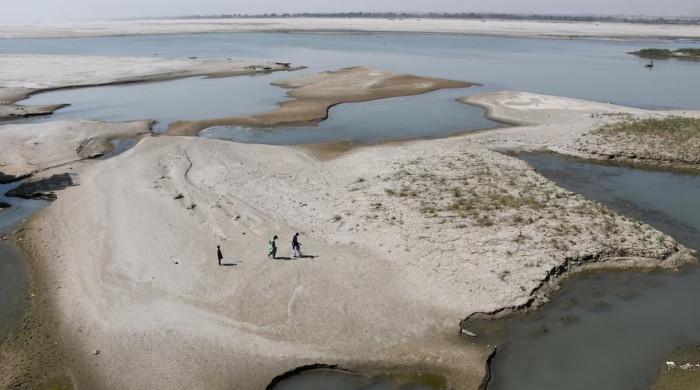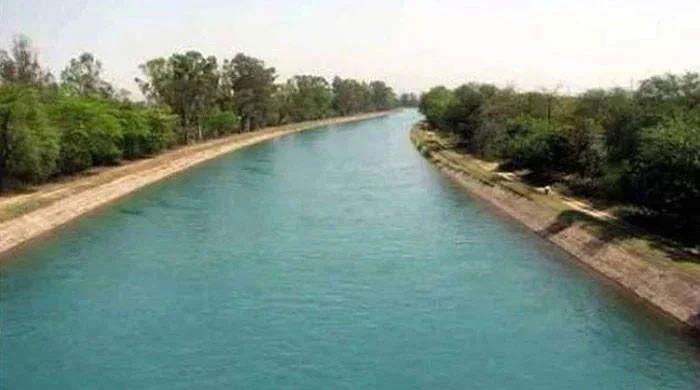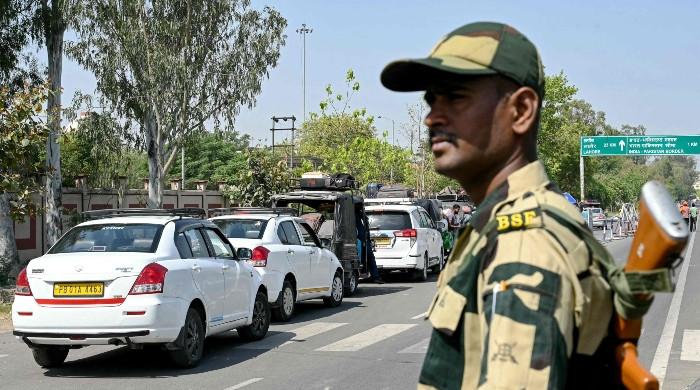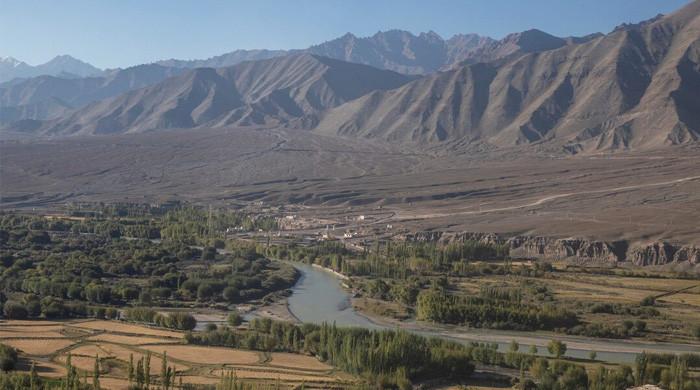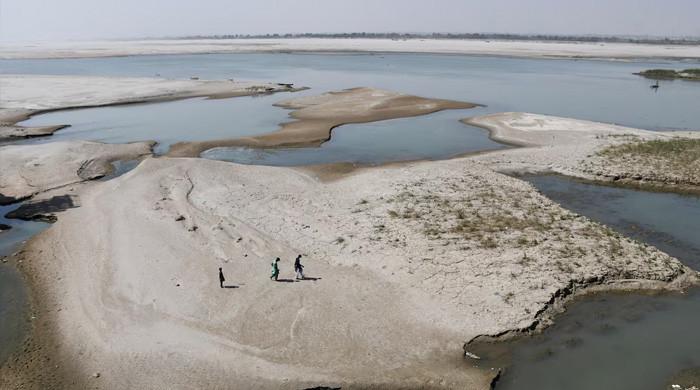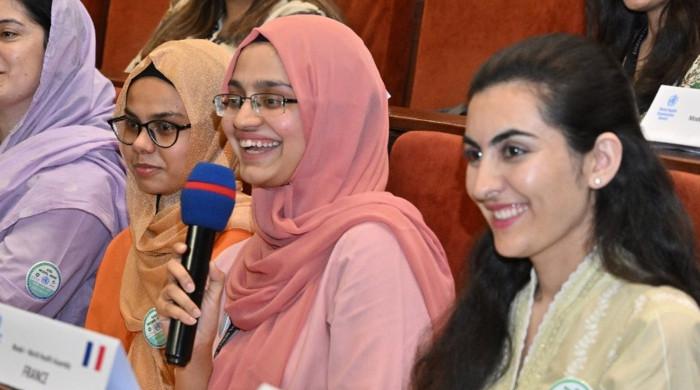India's war dance
Pakistan needs to be fully alert to respond in kind to any possible Indian attack across LoC or international borders
April 30, 2025
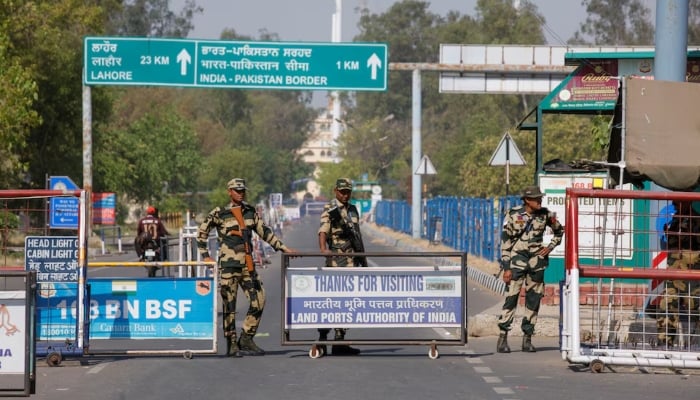
So, what does India want now? Indian sabre-rattling and accusations in the wake of the Pahalgam killings reflect a consistent Indian tendency to scapegoat Pakistan in pursuit of political and strategic objectives.
This time, the Indian objectives can be discerned within the prevailing geopolitical environment in South Asia. This environment features a global power rivalry, with India acting as the regional gendarme, enforcing the diktat of one global power to contain another.
Despite its supposed reputation for strategic autonomy, India has clearly compromised that autonomy due to the short-sightedness of its obscurantist statecraft philosophy.
Freed from the moral and legal encumbrances of interstate relations due to its self-assigned role as a regional surrogate, India now exhibits no moral compunction to respect international law. Like a bull in a China shop, it is wreaking havoc on regional peace, heedless of the consequences.
The Indo-Pacific alliance's relevance, coupled with the mollycoddling by G7 countries, has emboldened India with a lemming-like, self-destructive hubris. It is this hauteur that has rendered India oblivious to the catastrophic consequences of its war dance as a nuclear state.
The war hysteria being stoked by the stronger protagonist in the subcontinent's nuclear conflict equation is fraught with dangerous portents.
When nuclear adversaries enter into a conflict, their greatest challenge is finding space for an elusive conventional engagement, while their gravest vulnerability lies in the potential escalation towards a mutually annihilating nuclear exchange.
Herman Kahn's escalation ladder operates on steroids when the rivals are neighbours and the leadership is ideologically driven. The rung-by-rung escalation may quickly collapse into a rapid escalation to the nuclear level due to the increased tempo of operations under India's proactive operational doctrine and Pakistan's New War Fighting Concept (NWFC).
If India attacks Pakistan along the Line of Control (LoC) to seize a few posts, it would receive a quid pro quo response, likely losing an equal number of posts in a vulnerable sector along the LoC.
Aerial attacks by India would invite similar embarrassment as witnessed during the Balakot incident in 2019, while a naval blockade comes with its own complications and limitations.
The pursuit of conventional war space remains a holy grail for India, whereas Pakistan's grand strategy is based on the denial of such space. Pakistan appears to have outmanoeuvred India through this strategy of war space denial, prompting India to resort to indirect methods such as proxy warfare to achieve its objectives.
Having failed to realise its goals through terror financing and proxy warfare in Pakistan's Balochistan and Khyber Pakhtunkhwa, India has now shifted its focus to victim-playing in the Indian Illegally Occupied Kashmir (IIOJK) to justify its actions.
Several Indian sources have acknowledged that their proxy warfare strategy in Balochistan is proving ineffective, and have suggested that India should prioritise IIOJK, claiming that 'the road to Balochistan passes through IIOJK'.
The current Pahalgam narrative, blaming Pakistan for attacks on tourists, arises from this Indian strategic calculus, through which they aim to achieve multiple objectives with a single stratagem.
The strategy involves framing terrorist attacks in IIOJK as the work of incited Kashmiris who are fighting to reclaim their political and cultural identity — an identity that was stripped away by India in 2019 through the revocation of Article 370.
The Indian objectives behind this stratagem include consolidating their tenuous grip on the illegally annexed region, altering property ownership, and changing the state's demographics.
Following the recent incident, Indian authorities have begun demolishing several properties owned by Kashmiris. These demolitions carried out under the guise of counterterrorism operations, will eventually result in the confiscation and transfer of these properties to Indian nationals settling in IIOJK.
Plans to construct hotels and casinos are being facilitated through incidents like Pahalgam, where land is being forcibly acquired from native Kashmiris and handed over to non-state-subject settlers.
Another Indian objective is to demonise Pakistan as a terror-sponsoring nation, leveraging that label to pursue its diplomatic isolation while simultaneously destabilising it through proxy groups such as the Tehreek-e-Taliban Pakistan and the Balochistan Liberation Army.
A third objective is to obstruct the China-Pakistan Economic Corridor (CPEC), a task India has assumed as part of its role as a regional gendarme in the broader strategy to contain China.
India also seeks to suspend the Indus Waters Treaty (IWT), a goal advanced by the staged Pahalgam incident. As the upper riparian in the Indus basin, India resents being constrained by treaty obligations, despite Pakistan's and the World Bank's sustained efforts to preserve the treaty's integrity.
The IWT was signed in 1960 between India and Pakistan to prevent water wars between the two countries, which India appeared intent on imposing on Pakistan following the expiration of the standstill agreement in 1948.
The IWT allocated the three western rivers of the Indus Basin to Pakistan while granting the waters of the three eastern rivers to India.
The treaty included no clause permitting unilateral withdrawal; any modification or termination required the mutual consent of both parties. It also established a permanent commission tasked with oversight and the resolution of concerns raised by either country, in addition to a dispute resolution mechanism involving a neutral expert or a court of arbitration.
India, following several other reckless ventures under the Modi government, turned its attention to the IWT and began searching for pretexts to exit the treaty based on unfounded justifications.
In October 2023, India issued a notice to Pakistan seeking to renegotiate the treaty, while Pakistan maintained that the existing provisions, if implemented in good faith under Article 26, adequately addressed the technical and legal concerns of both riparian states.
According to the IWT, the World Bank has two primary roles: first, to administer the Indus Basin Development Fund, and second, to oversee the dispute resolution mechanism.
The treaty is binding on both parties, and India is now in material breach of its obligations. Its unilateral invitation to Pakistan to renegotiate the treaty is unsupported by any provision within the agreement and is, therefore, patently illegal.
If India had legitimate concerns regarding Pakistan's handling of the treaty, it should have submitted a formal request for arbitration before the Court of Arbitration, as stipulated in the treaty. However, due to its mala fide intentions, India instead opted for a unilateral withdrawal.
If China were to adopt the same approach regarding the Brahmaputra River, it would place India in a significantly vulnerable position.
Pakistan needs to be fully alert to respond in kind to any possible Indian attack across the LoC or international borders and ramp up its media and diplomatic offensive to expose the Indian violation of international law.
Pakistan must initiate immediate high-level contacts with China and other regional and global powers to thwart India's aggressive designs, besides taking up the case of IWT revocation in the United Nations Security Council under Chapter 7 provisions.
Indians are at it as per their Hindutva-driven pugnacity and stopping this madness would require equal resolve and international support.
The writer is a security and defence analyst. He can be reached at: [email protected]
Disclaimer: The viewpoints expressed in this piece are the writer's own and don't necessarily reflect Geo.tv's editorial policy.
Originally published in The News




